Table of Contents
- What is a pipeliner welding Hood?
- 2. Key Features
- 3. Types of Pipeliner Welding Hoods
- 4. Factors to Consider When Choosing a Pipeliner Welding Hood
- 5. Proper Maintenance and Care
- 6. Safety Tips When Using a welding hood pipeliner
- 7. Advancements in Pipeliner Welding Hood Technology
- 8. Best Practices for Purchasing a Pipeliner Welding Hood
- Conclusion
Pipeliner welding hoods are a crucial safeguard in the world of welding. This comprehensive guide unveils the intricacies of these hoods, crucial for both safety and productivity. From key features to advanced technology, this article delves into essential aspects, empowering welders to make informed choices for an optimized welding experience.
What is a pipeliner welding Hood?
A pipeliner welding hood is a protective gear designed to shield a welder’s face and eyes during welding tasks. It safeguards against intense light, heat, sparks, and debris, ensuring safety in welding environments.
Importance of Choosing the Right Welding Hood
Selecting the appropriate welding hood isn’t merely about adhering to safety regulations; it significantly impacts productivity and the welder’s comfort. A poorly chosen hood can compromise visibility, cause discomfort during extended use, and ultimately hinder the quality of work.
Therefore, the significance of understanding the nuances of pipeliner welding hoods and selecting the right fit cannot be overstated. Factors such as lens shade, material durability, ergonomic design, and compatibility with personal preferences play a pivotal role in ensuring optimal performance and safety.
2. Key Features
Optimal Lens Shade and Visibility
One of the pivotal features defining a reliable welding hood pipeliner is its lens shade and visibility offerings. Welders operate in environments with varying light intensities, from bright arcs to low-light conditions. A quality hood provides adjustable lens shades, offering flexibility to adapt to different welding tasks. The ability to switch between shades ensures adequate visibility without compromising eye protection, allowing welders to work with precision.
Moreover, modern advancements have introduced auto-darkening lenses that adjust the shade automatically based on the intensity of the arc. This technology enhances efficiency by eliminating the need to manually adjust shades, providing continuous protection, and providing clear visibility.
Durability and Material Quality
The rigors of welding demand equipment that can endure harsh conditions. Pipeliner welding hoods are typically constructed with robust materials, such as high-impact-resistant polymers or fiberglass, to withstand heat, impacts, and potential abrasions.
Durability is crucial as it ensures the hood’s longevity, providing sustained protection over extended periods of use. High-quality materials not only safeguard against external elements but also contribute to the hood’s structural integrity, ensuring it remains intact and functional in challenging work environments.
Comfort and Fit for Extended Use
Comfort is a paramount consideration for welders, who often spend prolonged hours on the job. A well-designed welding hood prioritizes comfort by integrating adjustable headgear, padding, and ergonomic designs. These features distribute weight evenly, reducing strain on the neck and head and ensuring a snug yet comfortable fit.
An optimal fit not only enhances comfort but also minimizes distractions, allowing welders to focus on their work without discomfort or hindrances. Comfortable headgear and a balanced weight distribution are instrumental in facilitating prolonged usage without causing fatigue or discomfort.
3. Types of Pipeliner Welding Hoods
Fixed Shade vs. Variable Shade Hoods
The welding hoods come in various configurations, with fixed shade and variable shade hoods being the primary classifications.
- Fixed Shade Hoods: These hoods have a constant shade level, usually ranging from #9 to #13. They maintain a consistent level of protection throughout the welding process. While they offer reliability and simplicity, they might not be suitable for tasks requiring different light intensities.
- Variable Shade Hoods: Offering versatility, variable shade hoods enable welders to adjust the shade level based on the specific welding requirements. They typically encompass a range of shades, allowing seamless adaptation to different welding environments. This adaptability ensures optimal visibility and protection, particularly when dealing with varied welding techniques or materials.
Traditional vs. Modern Designs
- Traditional Designs: These hoods are reminiscent of older models and often feature a flip-up front for convenience when not welding. They are durable and straightforward, catering to welders who prefer simplicity in their equipment.
- Modern Designs: With technological advancements, modern pipeliner welding hoods incorporate innovative features such as auto-darkening lenses, ergonomic headgear, and lightweight materials. These designs emphasize enhanced functionality, comfort, and efficiency, catering to the evolving needs and preferences of welders seeking advanced equipment.
Understanding the nuances between fixed and variable shade hoods, as well as traditional and modern designs, empowers welders to choose the most suitable option aligned with their specific tasks, preferences, and working conditions.
4. Factors to Consider When Choosing a Pipeliner Welding Hood
Lens Clarity and Technology
The clarity of the lens is paramount in a pipeline welding hood. Advanced lens technologies offer superior optical clarity, reducing eye strain and providing a more accurate view of the welding area. Look for lenses with anti-glare coatings to minimize reflections and enhance visibility, especially in high-intensity welding scenarios.
Moreover, the type of lens technology plays a crucial role. Auto-darkening lenses, equipped with sensors, adjust the shade instantly based on the arc’s brightness. This technology ensures seamless transitions between different welding tasks and significantly improves efficiency by eliminating the need for manual shade adjustments.
Hood Design and Weight
The design and weight of a welding hood directly impact comfort and usability. Opt for a hood with an ergonomic design that contours to the face, providing a snug fit without compromising comfort. Adjustable headgear systems allow for customization, ensuring a balanced weight distribution across the head and reducing strain during prolonged use.
Additionally, consider the overall weight of the hood. Lightweight materials contribute to reduced fatigue, enabling welders to work for extended periods without discomfort. A well-balanced hood with a comfortable design enhances productivity and minimizes distractions while working.
Ventilation and Breathability
Ventilation is often overlooked but holds significance in ensuring comfort and preventing the buildup of heat and moisture within the hood. Adequate airflow and ventilation systems prevent fogging of the lens, maintaining clear visibility during the welding process. Look for hoods with ventilation systems that facilitate airflow without compromising protection.
Prioritizing lens clarity, hood design, weight, and ventilation when selecting a welding hood guarantees not only enhanced safety but also improved comfort and efficiency for welders operating in diverse welding environments.
5. Proper Maintenance and Care
Cleaning and Storage Tips
Maintaining a welding hood pipeliner is fundamental for its longevity and optimal functionality.
- Routine Cleaning: After each use, delicately clean the lens and exterior of the hood using a soft cloth or designated lens cleaning materials. Eliminate dust, debris, or any welding spatter to prevent potential scratches and uphold clear visibility.
- Avoid Harsh Cleaners: Refrain from using abrasive cleaners or strong chemicals that might cause damage to the lens or the hood’s surface. Stick to recommended cleaning solutions or mild soap and water for gentle yet effective cleaning.
- Appropriate Storage: When not in use, store the welding hood in a cool, dry place, shielding it from extreme temperatures, direct sunlight, or potential impacts. Proper storage safeguards the hood from unnecessary wear and tear.
Regular Inspection for Wear and Tear
Conducting regular inspections is pivotal to detecting any indications of wear and tear that could compromise the hood’s functionality or safety.
- Lens Examination: Scrutinize the lens for any scratches, cracks, or signs of degradation. Promptly replace damaged lenses to sustain optimal visibility and protective capabilities.
- Headgear Assessment: Inspect the headgear for any loose or damaged components. Verify that all adjustments are functional to maintain a secure and comfortable fit for the wearer.
- Shell Evaluation: Examine the hood’s external shell for any cracks, dents, or structural damage. Immediate attention to these issues is crucial to preserving the hood’s protective integrity.
By adhering to a regimen of regular cleaning, employing proper storage techniques, and conducting vigilant inspections, welders ensure their pipeliner welding hoods remain dependable and effective throughout their lifespan. Prioritizing maintenance not only extends the hood’s durability but also upholds the safety and comfort of the welder.
6. Safety Tips When Using a welding hood pipeliner
Eye Protection and Safety Standards
Welding operations expose the eyes to intense light, sparks, and harmful UV radiation. While the welding hood provides primary protection, additional measures are crucial for comprehensive eye safety.
- Use Safety Glasses: Wear safety glasses beneath the welding hood to provide an extra layer of protection against potential debris or sparks that might bypass the hood’s coverage.
- Ensure Compliance with Safety Standards: Verify that the welding hood meets industry safety standards. Look for certifications like ANSI Z87.1 to ensure the hood provides adequate protection against impacts and optical radiation.
Best Practices for Safe Welding
- Inspect Work Area: Before initiating any welding task, inspect the work area for potential hazards or flammable materials. Ensure adequate ventilation to dissipate fumes and gases.
- Positioning and Posture: Maintain a stable and comfortable stance while welding. Position yourself to have a clear view of the welding area through the hood without straining or compromising balance.
- Secure Hood Fit: Ensure the welding hood fits snugly and securely to prevent any gaps that might expose the face or eyes to hazardous elements.
- Regular Breaks: Take periodic breaks to prevent fatigue. Prolonged welding sessions can lead to decreased concentration and an increased risk of accidents.
7. Advancements in Pipeliner Welding Hood Technology
Latest Innovations in Lens Technology
- Auto-Darkening Lenses: One of the groundbreaking advancements, auto-darkening lenses, revolutionized welding safety and efficiency. These lenses adjust their shade darkness automatically in response to the arc’s brightness, providing seamless transitions between different welding tasks. This feature ensures continuous protection and eliminates the need for manual adjustments, significantly enhancing productivity.
- Integrated Optical Clarity: Modern lenses incorporate cutting-edge optical technologies that optimize clarity and reduce eye strain. Enhanced visibility allows for precise welding, even in challenging conditions, promoting better workmanship and accuracy.
Ergonomic and Functional Improvements
- Customizable Fit: Recent designs focus on adjustable headgear systems that provide a personalized and secure fit. These systems allow welders to fine-tune the hood for maximum comfort, reducing fatigue during prolonged usage.
- Lightweight Materials: Advancements in material science have introduced lightweight yet durable materials in welding hood construction. This innovation minimizes the strain on the wearer, enabling longer and more comfortable working hours.
- Improved Ventilation: Modern pipeliner welding hoods integrate enhanced ventilation systems to prevent fogging and improve airflow within the hood. These systems maintain clear visibility and reduce discomfort caused by heat buildup.
8. Best Practices for Purchasing a Pipeliner Welding Hood
Researching and Comparing Different Models
- Understanding Your Needs: Begin by assessing your specific welding requirements. Consider factors like the types of welding projects you undertake, working conditions, and the level of protection and comfort needed.
- Exploring Diverse Options: Research different brands and models available in the market. Look for reviews, user experiences, and expert recommendations to gain insights into the performance and durability of various hoods.
Considering User Reviews and Recommendations
- User Feedback: User reviews often provide valuable firsthand experiences. Consider feedback regarding durability, comfort, lens clarity, and overall performance to gauge the suitability of a particular welding hood.
- Seek Recommendations: Consult peers, colleagues, or welding communities for recommendations. Their experiences and insights can aid in narrowing down choices to find a welding hood that aligns with your preferences and needs.
Budgeting and Long-Term Investment
- Balancing Cost and Quality: While considering the budget, prioritize quality and features that align with your requirements. Opting for a slightly higher-quality hood may prove to be a worthwhile long-term investment in terms of durability and performance.
- Long-Term Durability: Evaluate the hood’s construction and material quality. Investing in a durable hood might incur a higher initial cost, but it can save money in the long run by reducing the frequency of replacements.
Conclusion
In conclusion, the world of welding is intricately tied to the reliability and functionality of the equipment used, and the pipeliner welding hood stands as a pivotal gear, ensuring both safety and efficiency.
From understanding the nuances between fixed and variable shades to embracing modern technological advancements, this comprehensive guide aimed to empower welders in making informed choices.
By prioritizing key features, maintenance practices, safety measures, and informed purchasing decisions, welders can not only enhance their safety but also optimize their welding experiences.

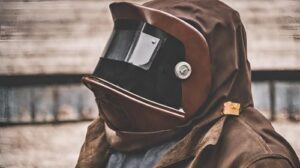
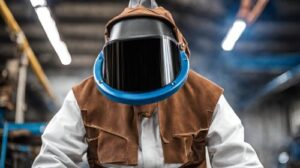
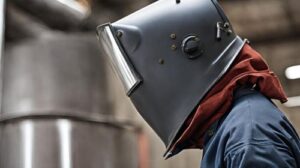

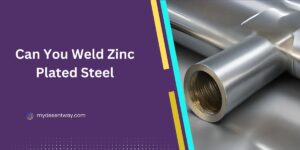

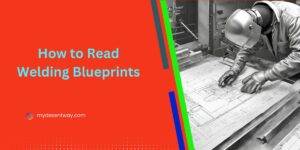
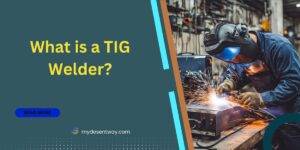



1 thought on “Pipeliner Welding Hood: A Comprehensive Guide”